BLOG
Feeling restless one Saturday morning, we fixed on a plan to drive in a totally new direction out of town. Forgoing our usual Kakheti and Mtskheta trips, we took the highway past Tbilisi Mall and turned right on the highway at Zahesi. We came off at the turn to Mamkoda (under the bridge) and headed up into the hills. Our destination: Tskhvarichamia (Lamb-eater).
We’d chosen it because my (Georgian) husband had some vague childhood recollection of it being a soviet health resort with the reputation of Tskhneti or Bakhmaro for its all-healing air; a place where children, in particular, were sent for fun daily regimes of exercise, massages and…well breathing in the fresh air.
The route there was well asphalted- a winding road lined by trees just coming into bud.
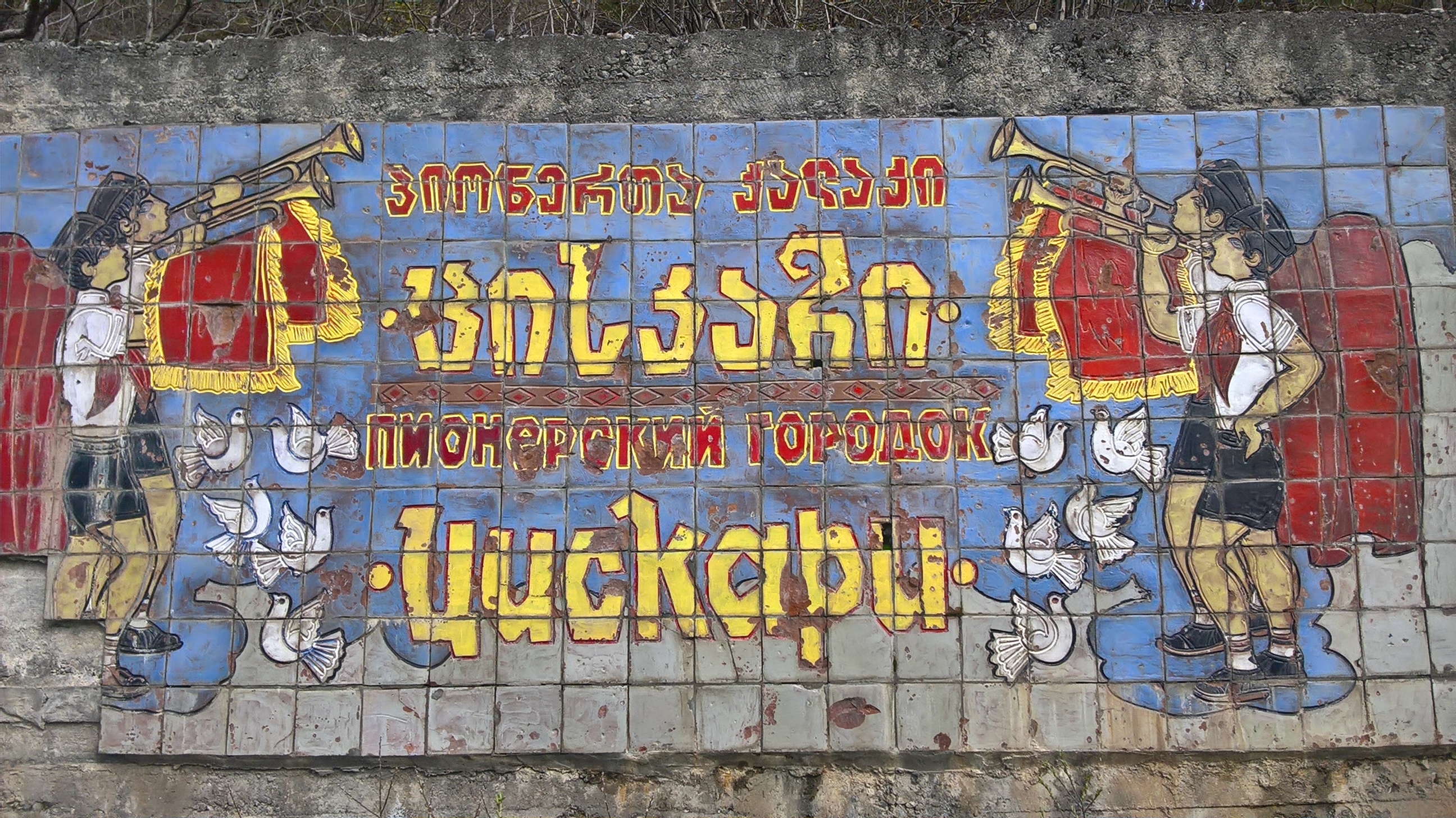
A surprise hit us just outside Lelubani village in the form of a giant 100-meter tiled mosaic running along the side of the road. It was so typical and symbolic of the soviet era, I had to stop and snap almost every part of it (too much to include in this blog, I’m afraid. From the first frame we saw that it was announcing the ‘Pioneers' Town,’ Pioneers being all the children of the Soviet Union, united by red ties and a fierce loyalty to the Motherland. My husband, just turned 40, recalls that by his time, they were ‘lazy Pioneers’ – where the uniform was on, you didn’t ask questions in class and did as you were told- but the days of reporting your father to the KGB for playing a forbidden record were long past.
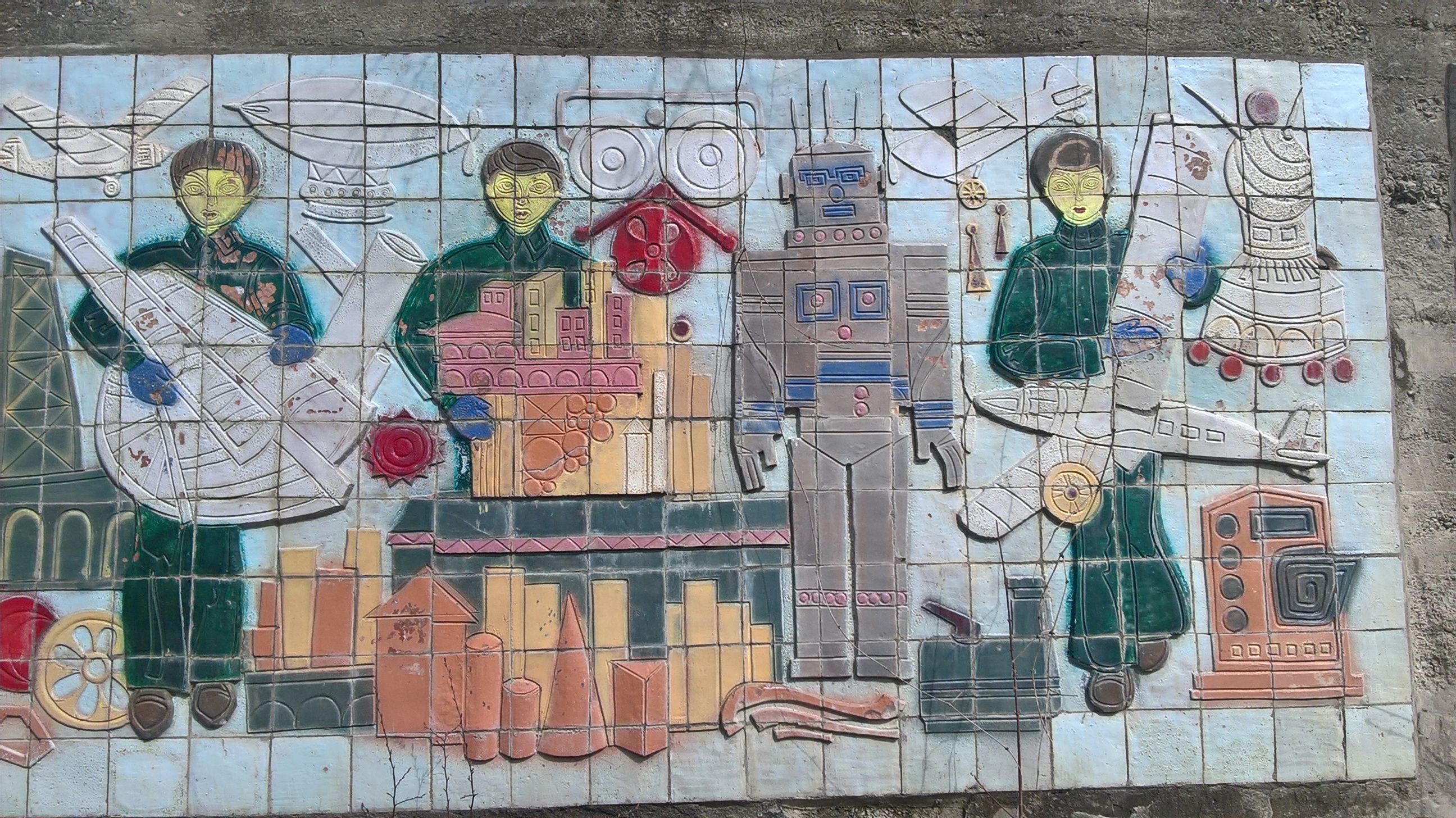
The next frames showed various uplifting and patriotic images of soviet times: astronauts, dancers (one representing every nation of the USSR), workers at their tasks, children at play, familiar animal and vegetable characters from soviet cartoons, symbols and cultural symbols from Georgia's pagan past.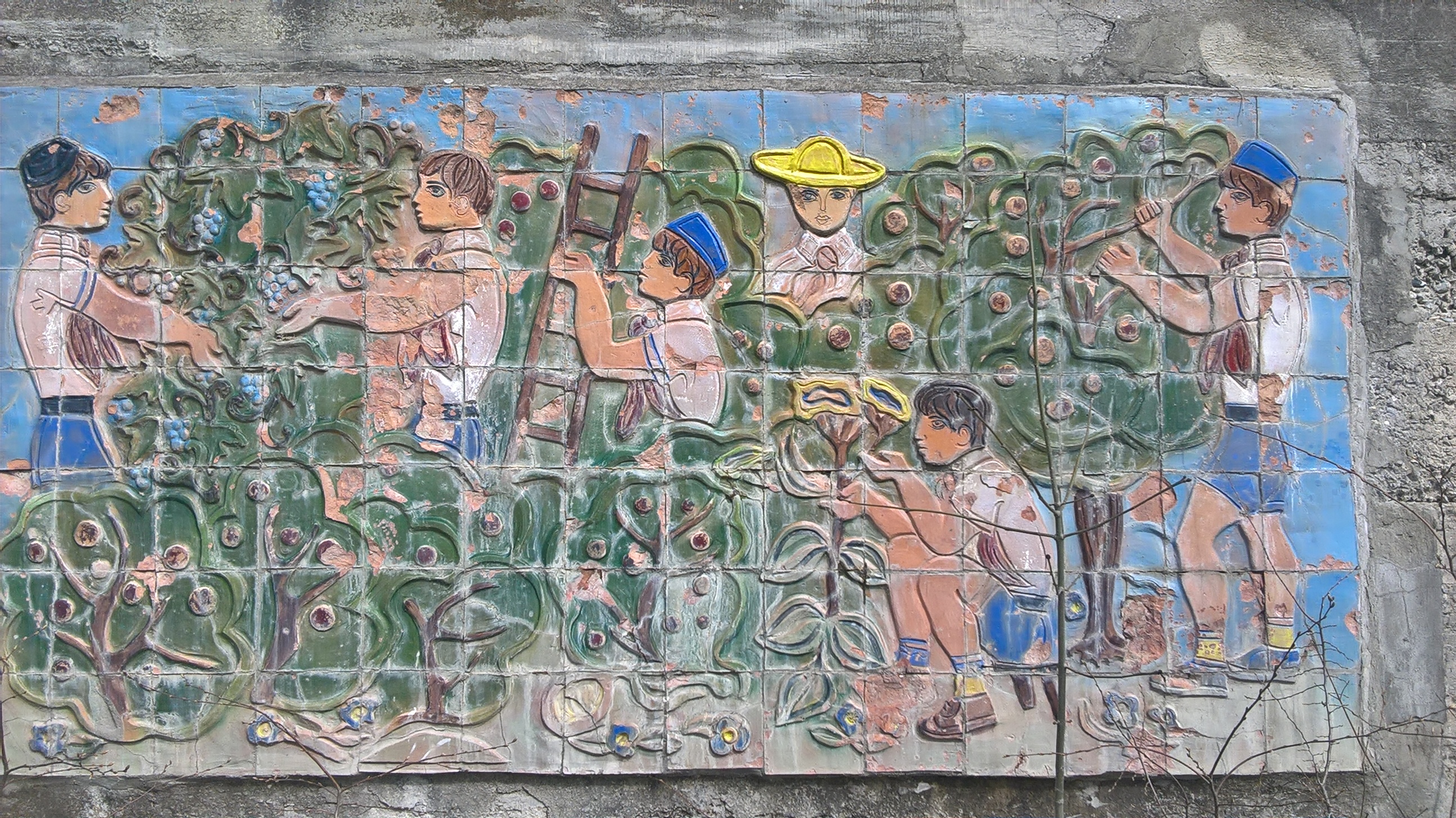
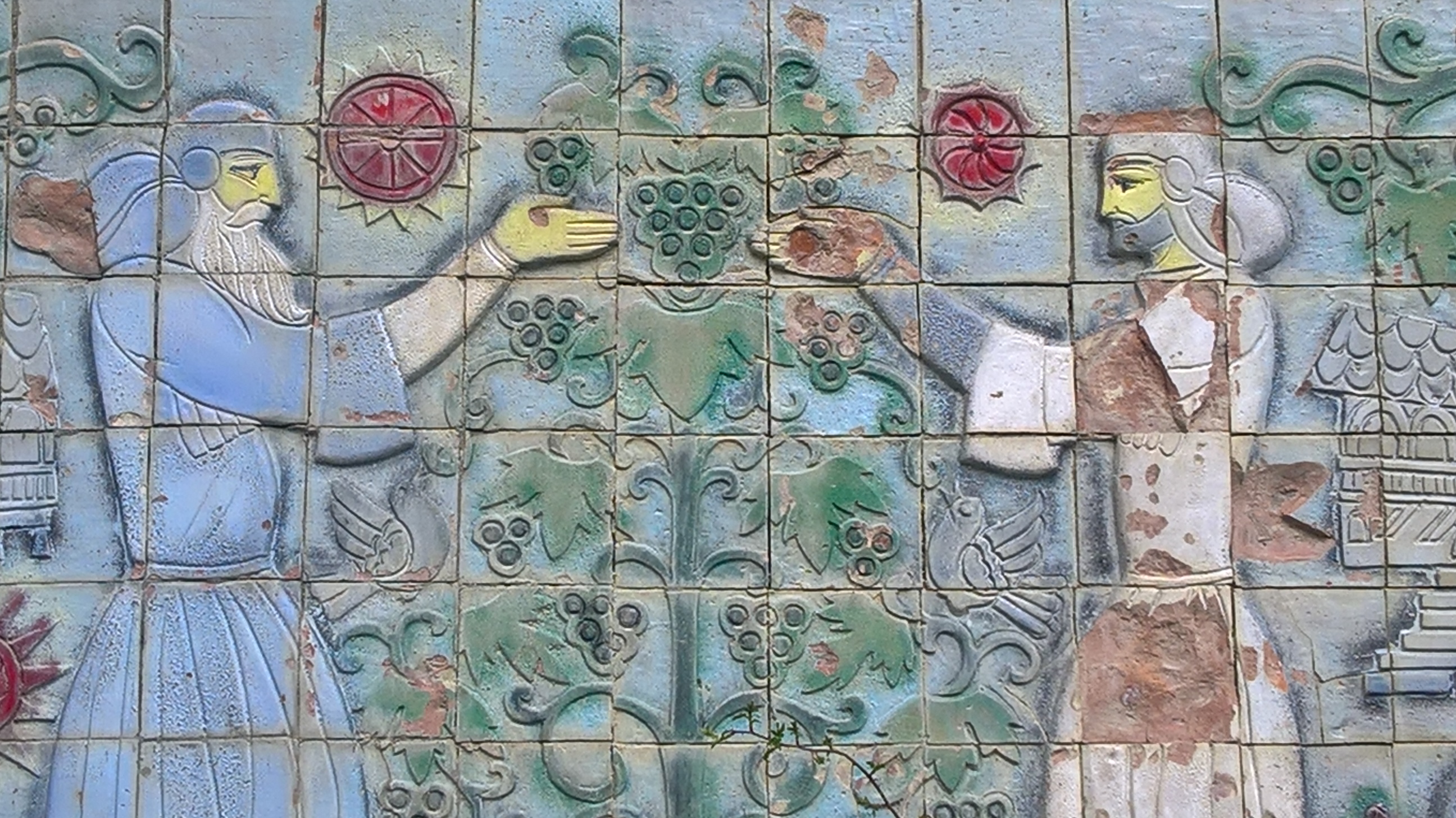
It was fascinating. But, of course, being way off the tourist track and reminding one inexorably of the tougher times, it has been abandoned to the whims of nature. Some parts have tiles missing or are so severely damaged, it is hard to tell what the image once was. Sad to see and so, with the evidence safely stored on my memory card, we drove on.
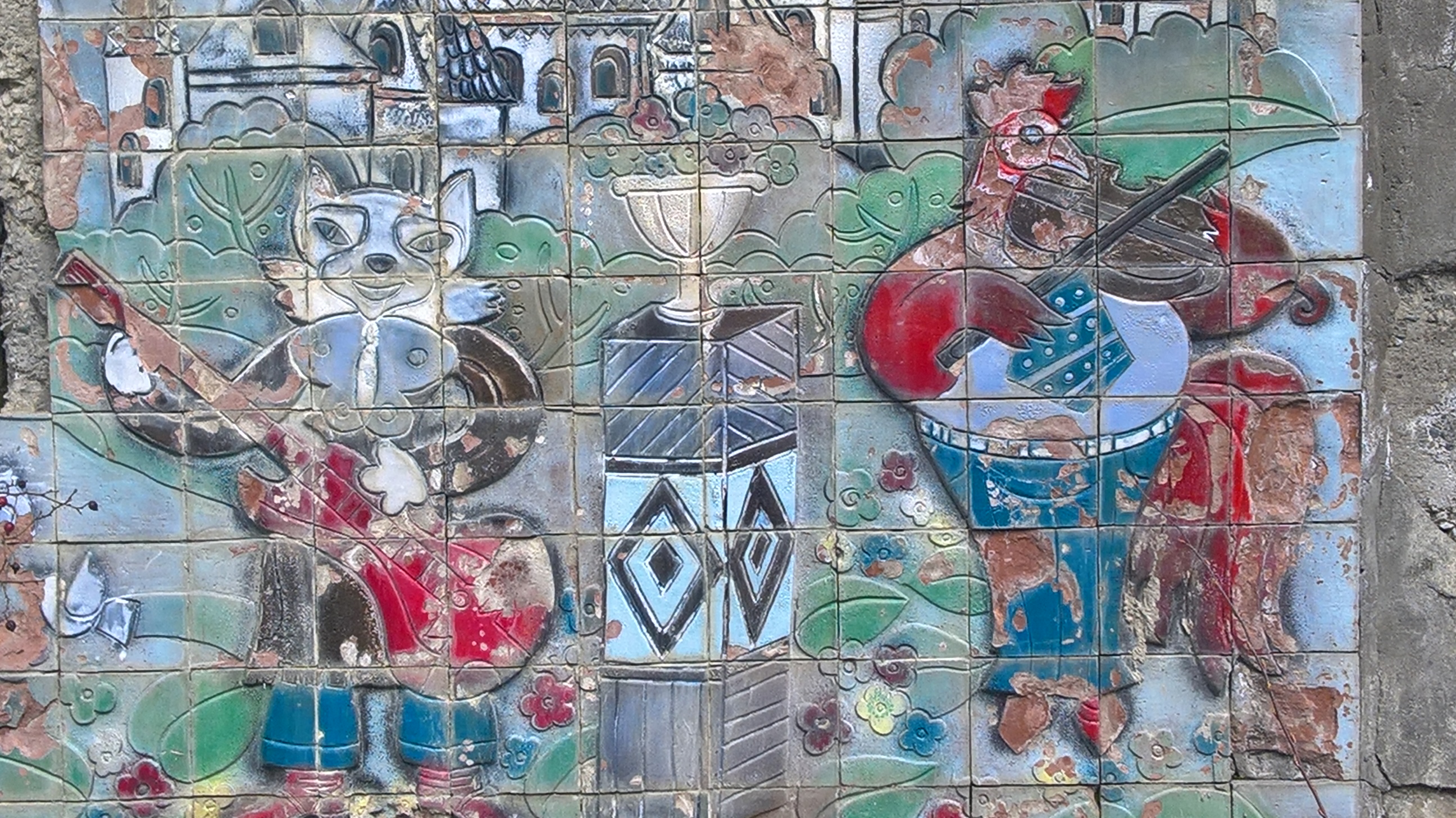
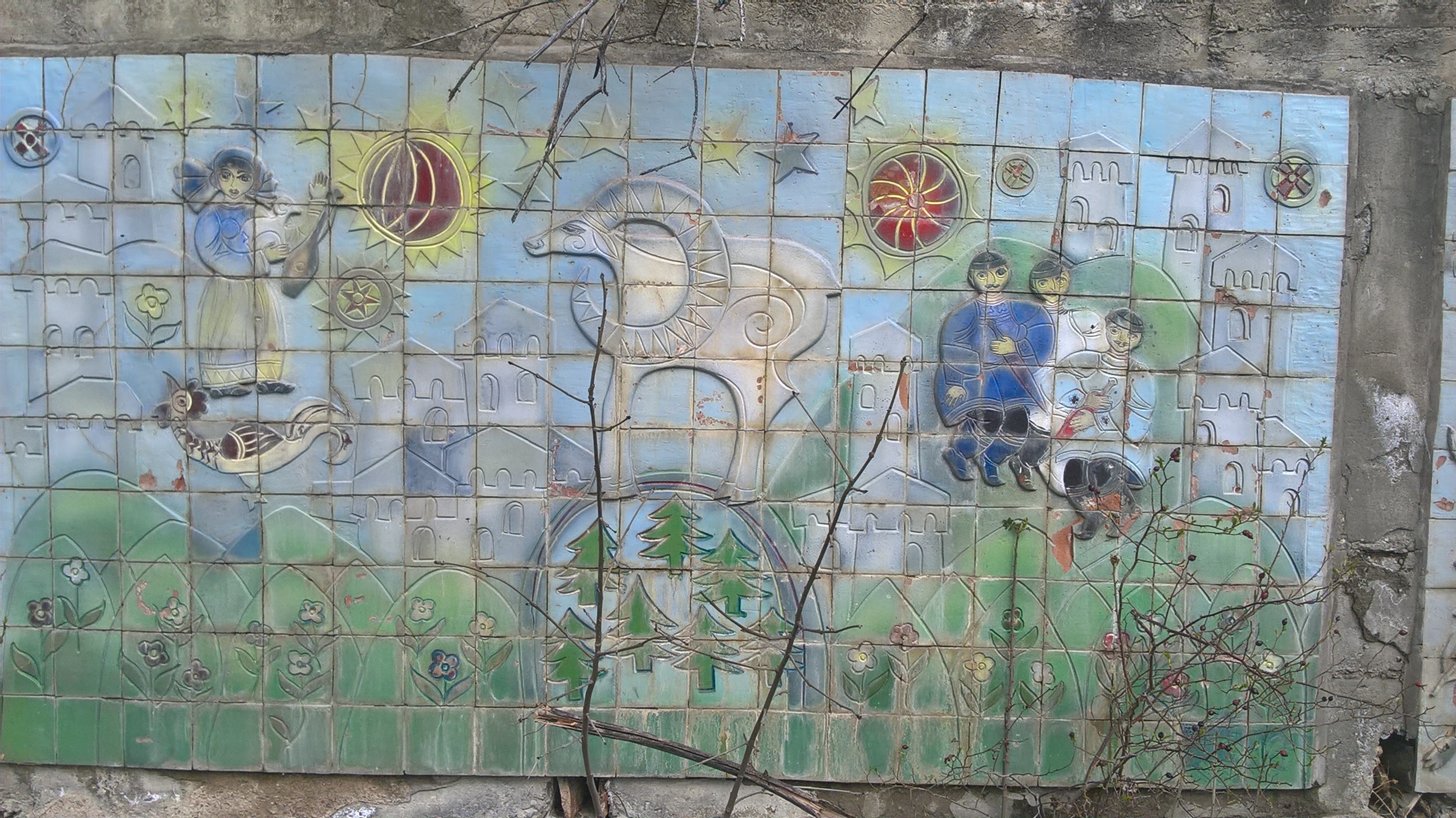
Past the entrance-to-nowhere that used to mark the Pioneer's Town and along in to Lamb-eater village, spread across the woody mountainside. A rusty sign pointed the way to a 'resort'- a standard soviet three-floor concrete block of individual en-suite rooms with balconies, the stairs now collapsed, the wallpaper peeling, all fittings and radiators long-gone and plant-life slowly creeping in. Nearby, and in other spots around the village, there are cottages of various age- clearly people do either live here or come in the summer months for the air and memories of better times.
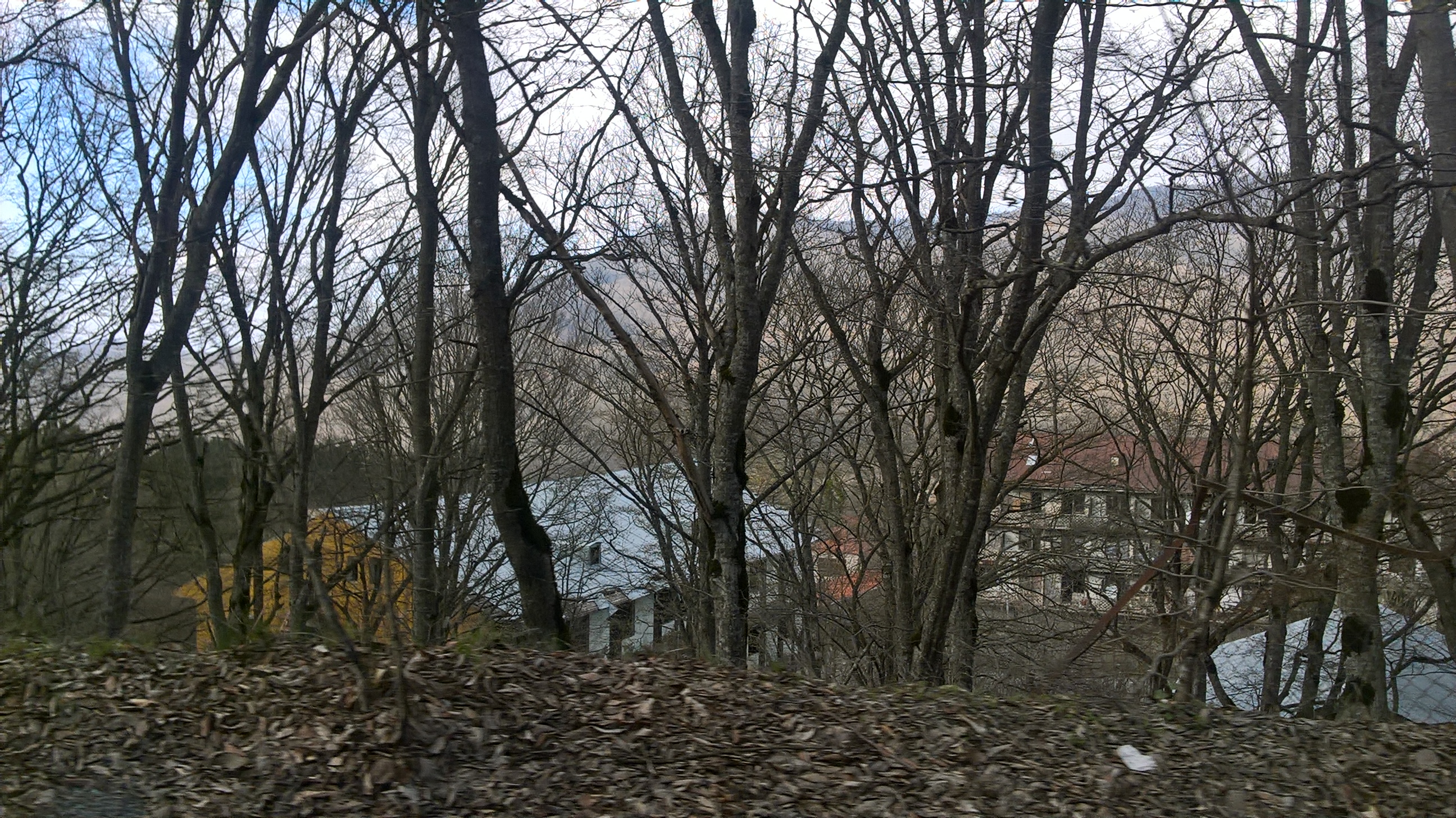
We stopped by the bridge across the Tezami River, planning to walk down and get a closer look at the water- to pass the time and enjoy the sunshine. To our astonishment, we came across a wall separating us from the river. Further investigation revealed the last thing we expected: a bear sanctuary! Five big, golden bears in a large barred enclosure, kept in check by thin electrified wires that they had clearly already had the sting of. A big bath on one side and large dog houses for shelter, the enclosure was large but far from entertaining for the poor animals. But the bears looked healthy and happy enough and my kids were thrilled to be able to stand within a meter of a real bear- no watchful eyes or security out here in the stick, just mum saying 'Don't go any closer- just look at those claws!"
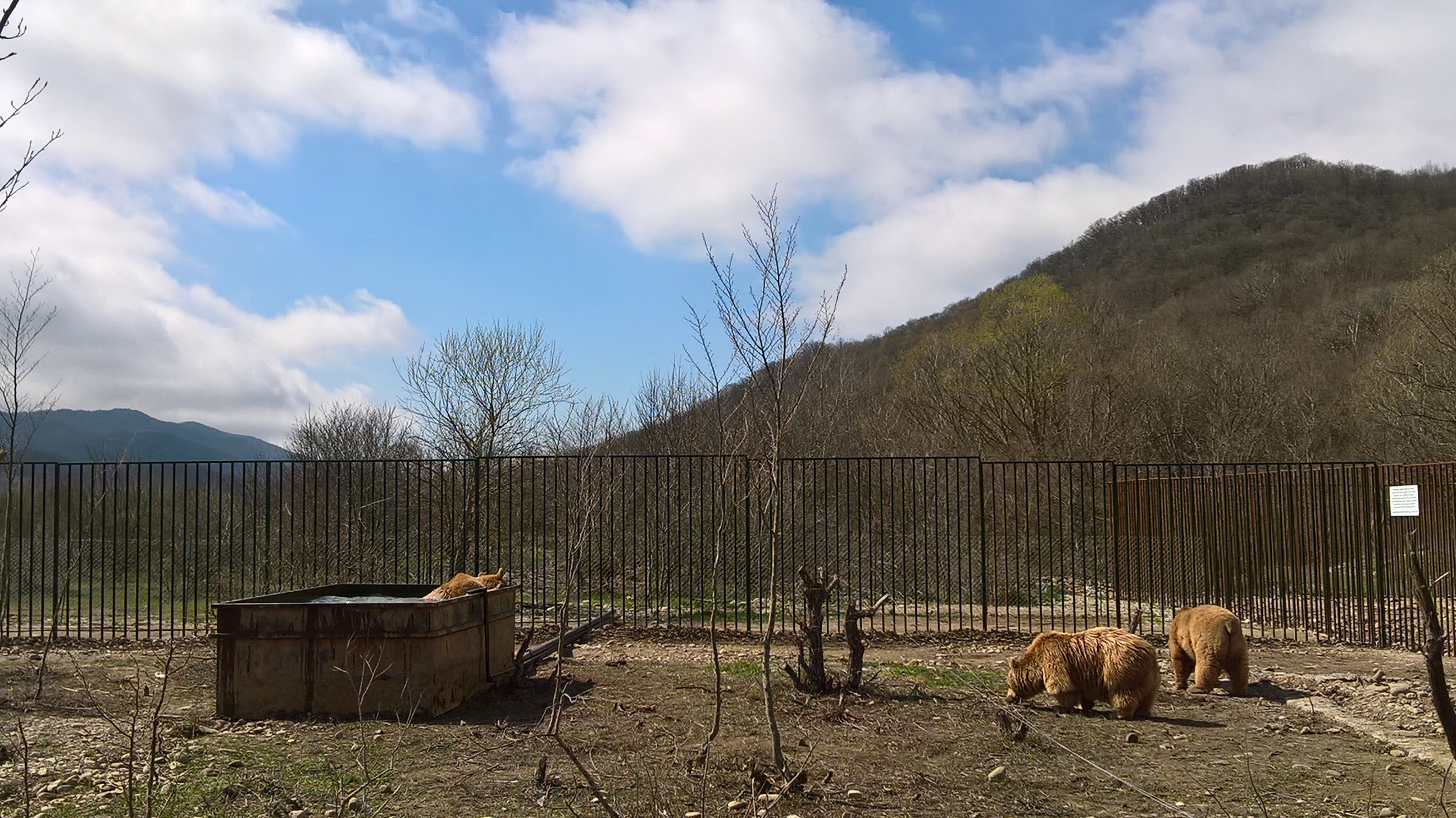
There was no lamb in Lamb-eater village that we could see, and no restaurant either. Perhaps the sleepy settlement only wakes up in summer. Luckily, we'd brought along chicken sandwiches as part of our picnic. But we did have a lamb dinner at home that night was we enthused over our soviet "Winnie Pooh" surprises!
P.S.- Since posting this blog, I have been told the legend behind the name. Apparently, most of the population there descends from Khevsuri families who, over the generations, moved down from the higher mountains into Ertso Gorge and beyond. Khevsuris, like most of mountain people, are shepherds and eat a lot of lamb, so the local people of that time called the place "lamb eaters' village." Thanks to Nikoloz Gogochuri for the info!
By Katie Ruth Davies
